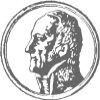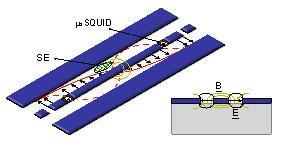Fisica della Materia Teorica: materia condensata, proprietà quantistiche
This research area in the theory of matter concerns quantum properties and correlations in condensed matter systems, especially electronic states in solids (electronic, optical and transport properties), elementary excitations (plasmons, excitons, polaritons, ...), many-body systems, strong correlation effects.
Many-body and strongly correlated systems -
Condensed matter physics includes a large class of physical systems in which mutual interactions among constituent particles are such that a mean-field theoretical description cannot be justified. Such a description assumes each particle to be subject to an effective potential generated by all other particles, while actually the quantum state of such many-body systems is characterized by strong correlation effects and it cannot be properly described as a product of single-particle states.
The Physics Department conducts active research of theoretical-computational character, which concerns optical and transport properties in solids and nanostructures in the presence of strongly interacting electrons, and of quantum phase transitions in strongly correlated systems of various dimensionalities, like e.g. Kondo systems, one-dimensional gases (Tonks-Girardeau, Tomonaga-Luttinger), the two-dimensional electron gas in a magnetic field (quantum Hall effect). A recent research line aims at describing highly nonlinear optical systems as non-equilibrium many-body systems, which are also called strongly correlated photonic systems.
Cavity quantum electrodynamics -
The interaction between a single atom and the electromagnetic field in a cavity has become a paradigm for the study of the interaction between radiation and matter in the quantum limit. Recently, besides the fundamental interest, such systems are being proposed as possible elements of quantum computation and information, as shown by the Nobel Prize for Physics 2012 awarded to Serge Haroche e David Wineland “for ground-breaking experimental methods that enable measuring and manipulation of individual quantum systems”. Such paradigm is now reproduced in a large variety of solid-state systems, from semiconductor nanostructures in the infrared region, to superconducting resonators in the microwave region (see figure).
The Physics Department is active in the study of theoretical and fundamental aspects of quantum electrodynamics in solid-state cavities, including artificial atoms in photonic micro- and nanocavities or qubits in superconducting cavities, and in exploring possible applications, e.g. for the realization of thresholdless lasers or devices for quantum information processing.
Elementary excitations in condensed matter -
The electronic system in solids gives rise to various types of collective excited states, named "elementary excitations" of "quasiparticles", since they behave like elementary particles in the quantum vacuum. Such elementary excitations include excitons (i.e., bound electron-hole pairs in insulators and semiconductors), volume and surface plasmons (i.e., collective charge excitations in metals), and polaritons (i.e., quasiparticles arising from the interaction of excitons and plasmons with electromagnetic radiation).
The Physics Department investigates quantum properties of excitons, plasmons and polaritons, focusing on most recent developments concerning surface plasmons in metallic nanostructures. Indeed, the use of surface plasmon polaritons allows manipulating electromagnetic radiation on nanometric scales below the usual diffraction limit, leading to quantized modes with extremely low effective volumes. A related research line concerns Josephson plasmons in high-Tc superconductors (cuprates like YBCO and BSCCO), which are highly interesting because Josephson tunneling between neighboring Cu-O planes produces low-energy plasmons (in the Terahertz or mid-infrared range) which appear to be correlated with the increase of Tc in multilayer superconductors.
Staff: L.C. Andreani, D.Gerace, M. Liscidini




